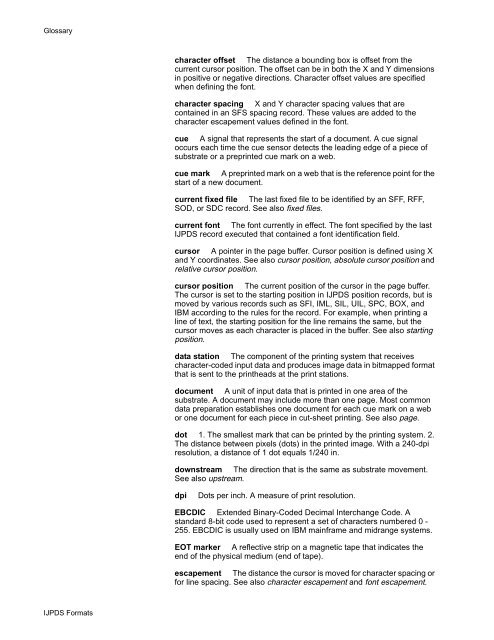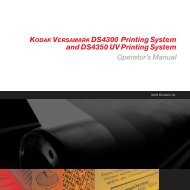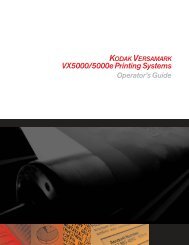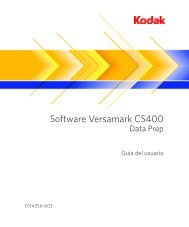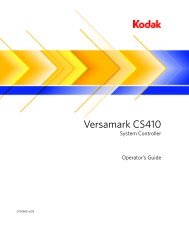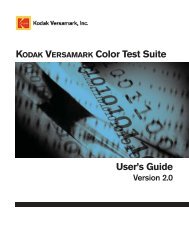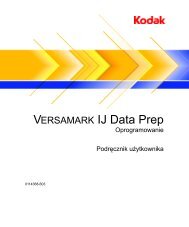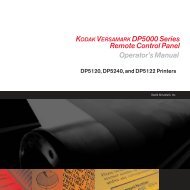You also want an ePaper? Increase the reach of your titles
YUMPU automatically turns print PDFs into web optimized ePapers that Google loves.
Glossary<br />
IJPDS Formats<br />
character offset The distance a bounding box is offset from the<br />
current cursor position. The offset can be in both the X and Y dimensions<br />
in positive or negative directions. Character offset values are specified<br />
when defining the font.<br />
character spacing X and Y character spacing values that are<br />
contained in an SFS spacing record. These values are added to the<br />
character escapement values defined in the font.<br />
cue A signal that represents the start of a document. A cue signal<br />
occurs each time the cue sensor detects the leading edge of a piece of<br />
substrate or a preprinted cue mark on a web.<br />
cue mark A preprinted mark on a web that is the reference point for the<br />
start of a new document.<br />
current fixed file The last fixed file to be identified by an SFF, RFF,<br />
SOD, or SDC record. See also fixed files.<br />
current font The font currently in effect. The font specified by the last<br />
IJPDS record executed that contained a font identification field.<br />
cursor A pointer in the page buffer. Cursor position is defined using X<br />
and Y coordinates. See also cursor position, absolute cursor position and<br />
relative cursor position.<br />
cursor position The current position of the cursor in the page buffer.<br />
The cursor is set to the starting position in IJPDS position records, but is<br />
moved by various records such as SFI, IML, SIL, UIL, SPC, BOX, and<br />
IBM according to the rules for the record. For example, when printing a<br />
line of text, the starting position for the line remains the same, but the<br />
cursor moves as each character is placed in the buffer. See also starting<br />
position.<br />
data station The component of the printing system that receives<br />
character-coded input data and produces image data in bitmapped format<br />
that is sent to the printheads at the print stations.<br />
document A unit of input data that is printed in one area of the<br />
substrate. A document may include more than one page. Most common<br />
data preparation establishes one document for each cue mark on a web<br />
or one document for each piece in cut-sheet printing. See also page.<br />
dot 1. The smallest mark that can be printed by the printing system. 2.<br />
The distance between pixels (dots) in the printed image. With a 240-dpi<br />
resolution, a distance of 1 dot equals 1/240 in.<br />
downstream The direction that is the same as substrate movement.<br />
See also upstream.<br />
dpi Dots per inch. A measure of print resolution.<br />
EBCDIC Extended Binary-Coded Decimal Interchange Code. A<br />
standard 8-bit code used to represent a set of characters numbered 0 -<br />
255. EBCDIC is usually used on IBM mainframe and midrange systems.<br />
EOT marker A reflective strip on a magnetic tape that indicates the<br />
end of the physical medium (end of tape).<br />
escapement The distance the cursor is moved for character spacing or<br />
for line spacing. See also character escapement and font escapement.


